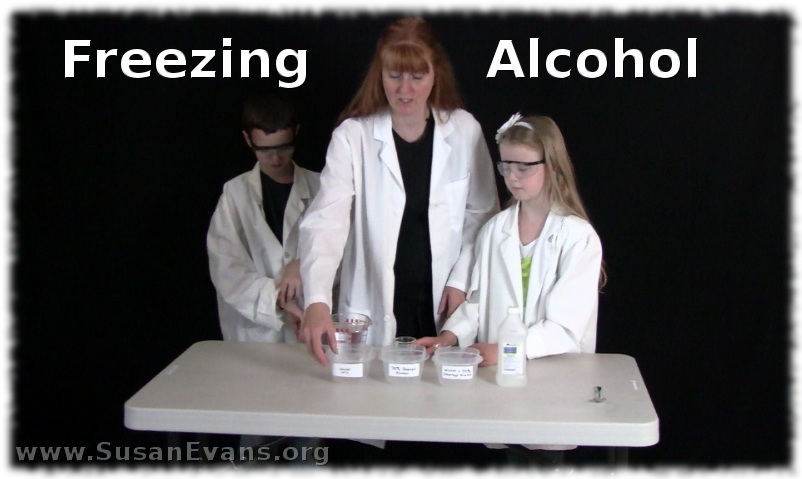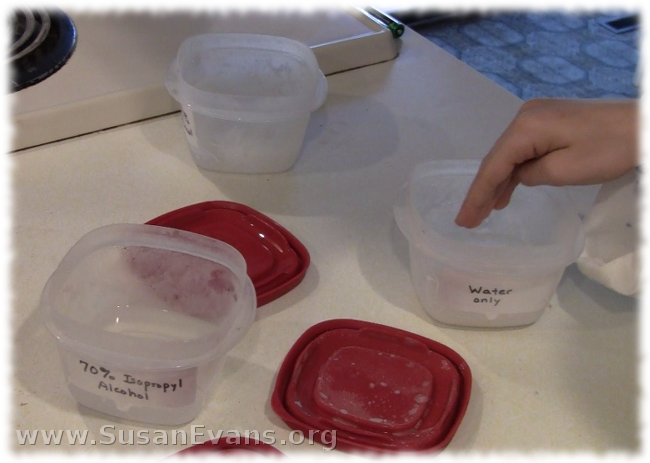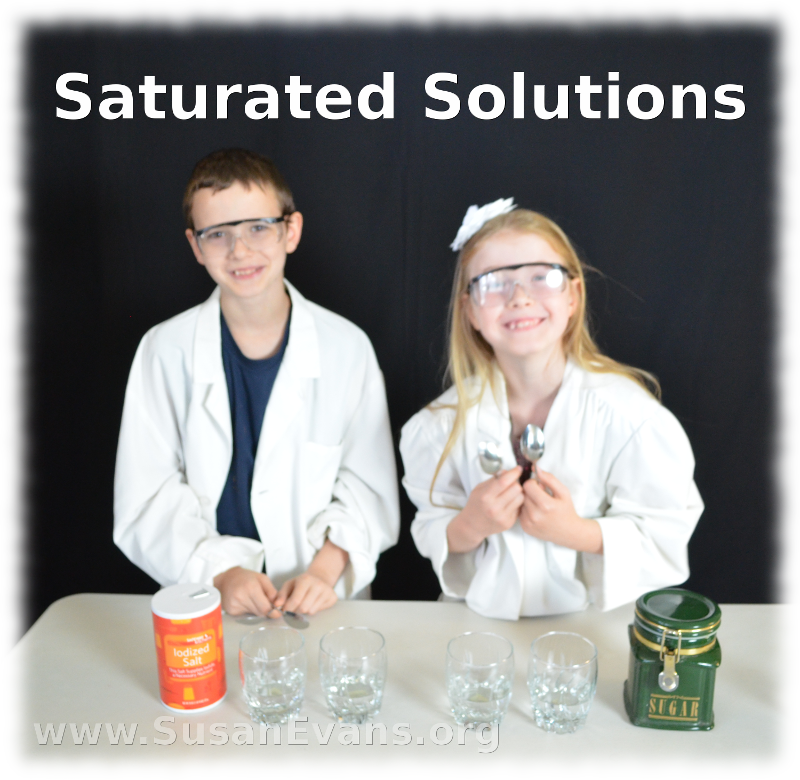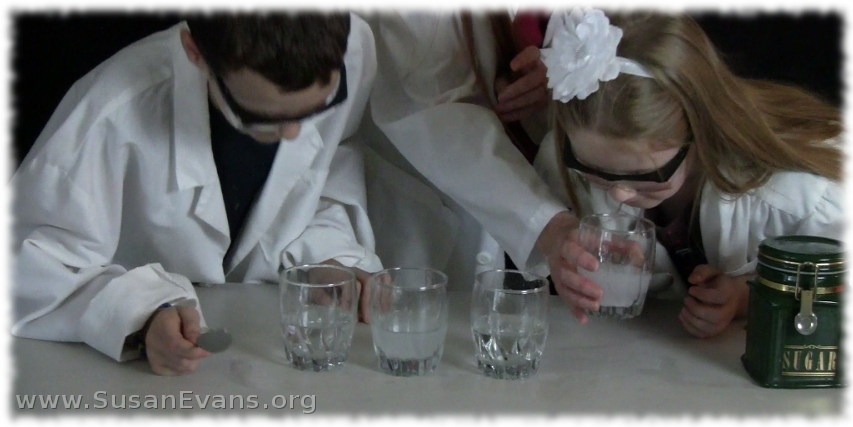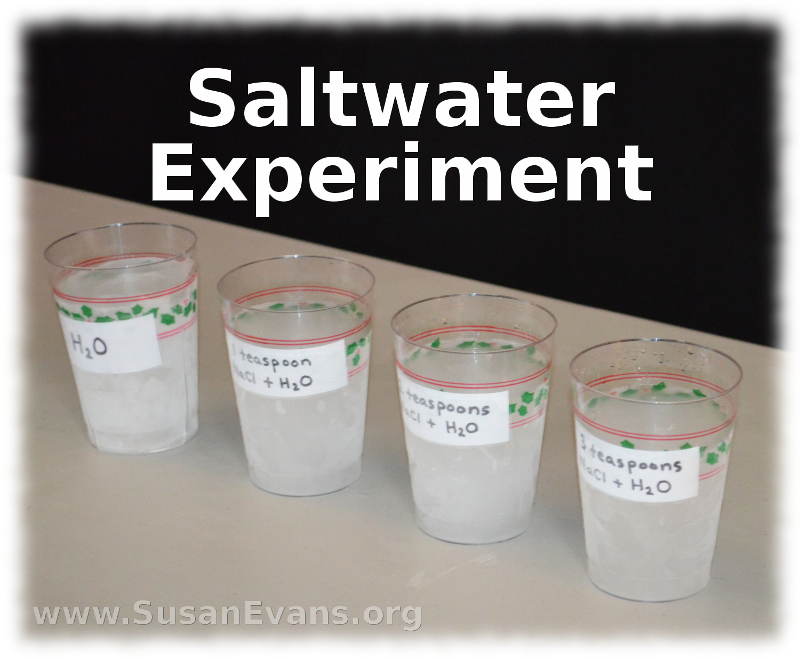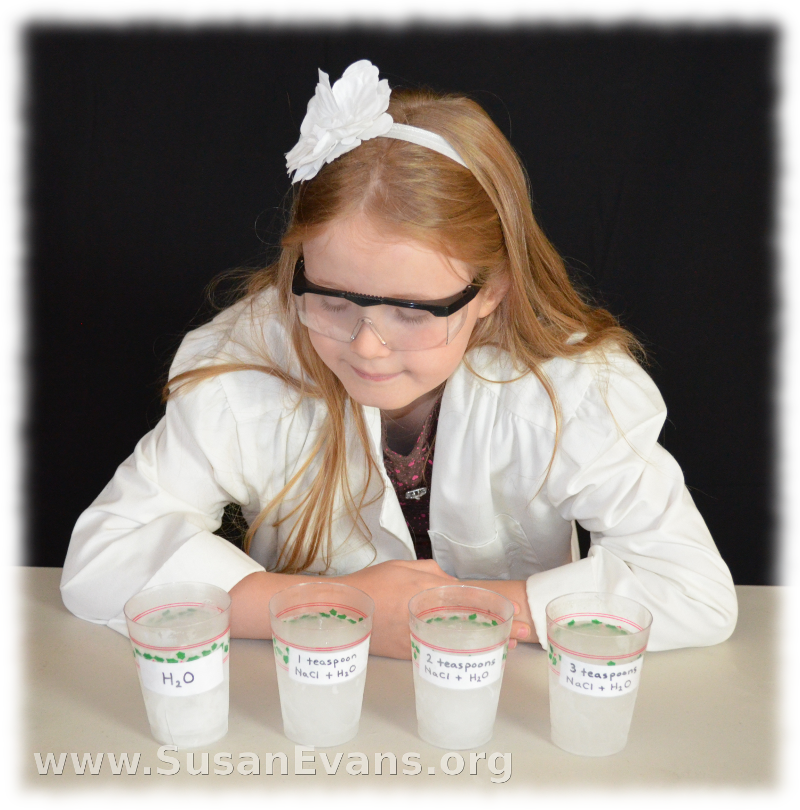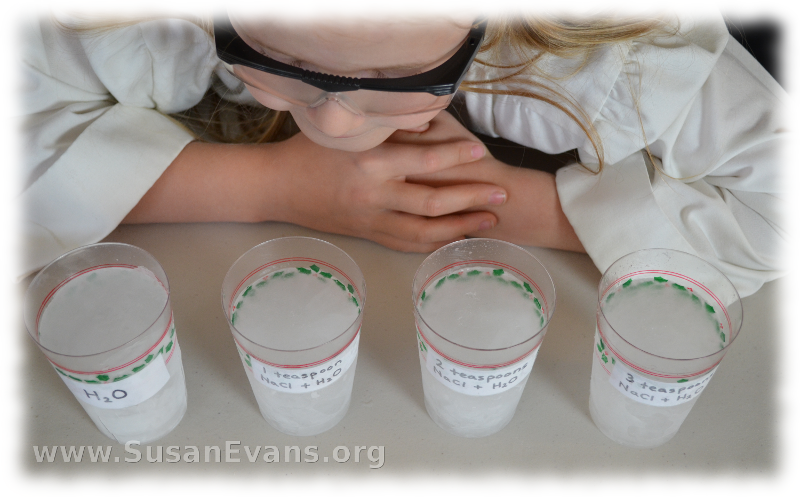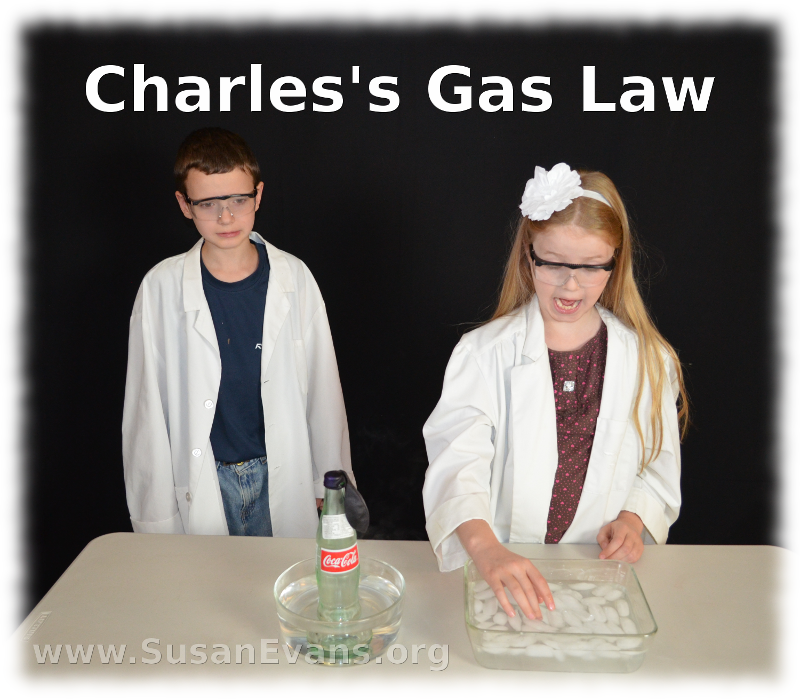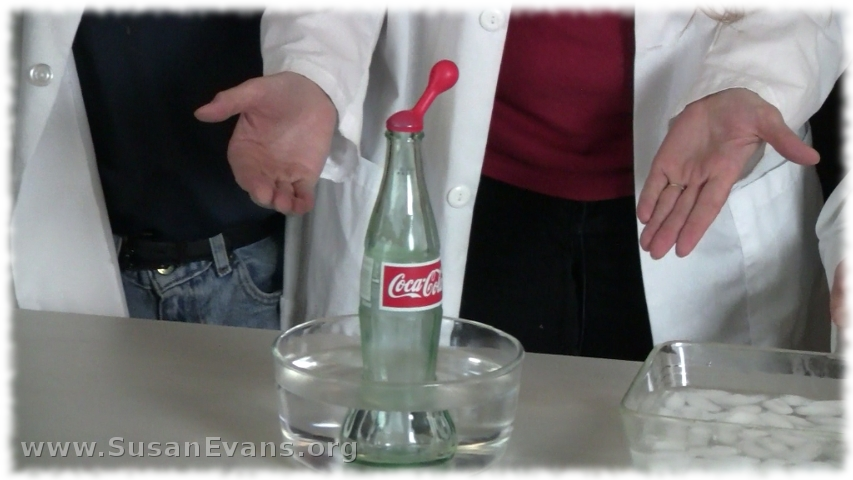This post contains affiliate links. I was compensated for my work in writing this post.
Today we are doing a “Freezing Alcohol” experiment where we will put different amounts of alcohol combined with water in the freezer to see which will freeze first. My younger two children are using Christian Kids Explore Chemistry by Bright Ideas Press, and this is one of the experiments in the book.
Grab three plastic containers with lids. You need lids because alcohol evaporates so easily, and we don’t want the alcohol to evaporate out of the containers and affect our results.
Label the three containers by writing on paper with a black permanent marker. Attach the labels with packing tape. Here are the three labels:
- Water only
- 70% Isopropyl Alcohol
- Water + 70% Isopropyl Alcohol
The water only container is the control. We will see how fast normal water freezes and compare that to the amount of time it takes for alcohol to freeze, if it freezes at all.
Grab your rubbing alcohol from your medicine cabinet. This alcohol will say “70% Isopropyl Alcohol.” Pour the alcohol into the second container.
The third container should have half alcohol and half water. If you put 100 ml of water in the first container and 100 ml of alcohol into the second container, you will want to put 50 ml of water and 50 ml of alcohol into the third container.
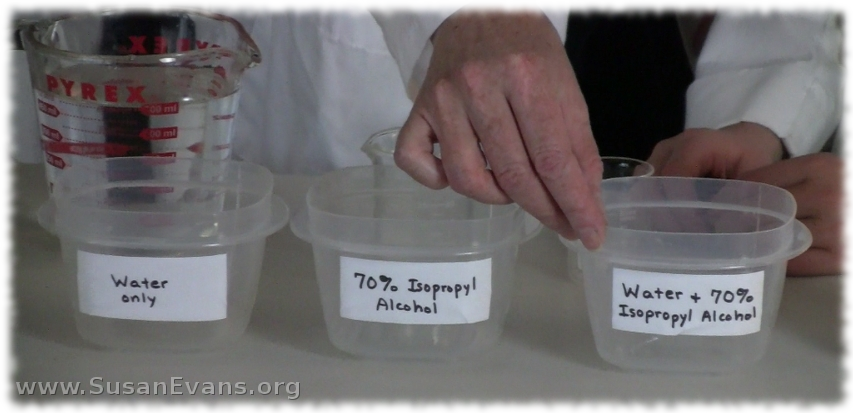 Place all three containers into the freezer and wait two hours. Then pull them out and remove the lids to see what is going on. The first container was frozen solid. The second container was sort of frozen on the bottom, but liquid on the top. The third container was completely liquid with no ice whatsoever.
Place all three containers into the freezer and wait two hours. Then pull them out and remove the lids to see what is going on. The first container was frozen solid. The second container was sort of frozen on the bottom, but liquid on the top. The third container was completely liquid with no ice whatsoever.
Even after 24 hours, we have similar results, except for the second container. Take a look:
Alcohol definitely has a lower freezing point than water does. In fact, a normal household freezer (which is around 0 degrees) will never be able to freeze the alcohol unless the temperature of the freezer is lowered considerably! Of course, you would not want to do that to your freezer, or all your food would get freezer burn!
